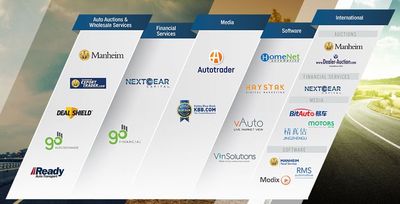Automotive Publisher Group Experts Comment On November 2017 US Auto Sales
Earlier today, automakers across the U.S. began reporting their November 2017 sales results here are some insights from automotive data publisher Cox.
From Michelle Krebs, executive analyst for Autotrader:Stronger than forecast November vehicle sales are due to a healthy economy, a confident consumer who is ready to buy and targeted incentives that help close the deals.
(On FCA) Fiat Chrysler sales were down slightly less than forecasts. On one hand, Fiat Chrysler vastly reduced fleet sales in November but, at the same time, it had some significant incentives to move the product. Chrysler’s hefty 14 percent increase, for example, was thanks in part to beefy incentives on leftover 2017 models. Fiat Chrysler offered a roughly $9,000 lease incentive on the 2017 Chrysler Pacifica minivan and consumer incentives of $14,000 to $16,000 on the 300 sedan. For the eighth consecutive month, Fiat Chrysler also heavily targeted non-prime consumers – those with FICO scores below 620, with special incentives on a range of models. Still, when Jeep’s health improves so does Fiat Chrysler’s. Jeep sales, while down 2 percent, were particularly strong considering it cut fleet sales by 75 percent this month. The new Compass and the Cherokee racked up hefty double digit gains.
(On Ford) Ford had a better-than-expected month with the F-Series and utilities delivering strong results. Ford did a lot of adjusting of its incentive programs throughout November, sweetening the pot on a number of leftover 2017 models that helped boost sales.
(On GM) General Motors sales were down a bit more than expected, and its performance was a mixed bag. Buick and Cadillac were down, largely because, with only a couple of exceptions, they simply don’t have the vehicles the market wants – they have more car models than utilities. Chevrolet was the bright spot with the lowest sales decline as it focused on retail instead of fleet business, though Chevrolet’s good performance may have been at the expense of GMC’s.
From Rebecca Lindland, executive analyst for Kelley Blue Book:(On FCA) FCA continues to rationalize fleet sales, leading to lower monthly sales but improved retail performance. It will be interesting to see next year how year-over-year numbers perform. Jeep should see impressive growth from the new Wrangler.
(On Ford) Ford continues to live and die by the F-Series, but sales of the Escape and Edge, particularly to women, provides portfolio diversification. I especially like the new active lifestyle ad with a daughter helping her mom after a doctor’s appointment. It’s one of the few car ads that reflects the reality of caring for an aging parent and emotionally connects with consumers.
(On GM) GM sales came in soft as expected, but average transaction price exceeded $37,000 for the first time ever, even with Cadillac down nearly 13%. Buyers are willing to spend big for the GM products they want. If Cadillac can get its act together, we could really see GM’s profitability soar.
From Akshay Anand, executive analyst for Kelley Blue Book:
(On Honda) Honda had a great November, once again showing lifts in key car and truck sales. Civic continues to do well despite its slow-growth segment, and Accord will likely follow suit as the redesign continues to hit dealer lots nationwide. If Honda can continue to remain disciplined with incentives, the company is set up well for short and long-term success.
From Michael Harley, Group Managing Editor, Autotrader and Kelley Blue Book
Despite an often overhyped gloom and doom forecast as the automotive industry comes off a record-setting pace, 2017 is shaping up to be a solid year. While sales aren’t attaining astronomical levels, automakers continue to reduce reliance on fleet sales, inventories aren’t as bloated, and new crossover product is better aligned to what today’s buyer is seeking. Overall, the U.S. auto industry is in much healthier state today than it was earlier this year.
From Jonathan Smoke, Chief Economist for Cox Automotive
Ignore the comparison to last year and appreciate the fact that new vehicle sales are much stronger now than in the spring and summer. More than hurricane-replacement sales is at play in the market, as those immediate replacement needs have already been filled. The boost in sales over the last three months is a reflection of targeted incentive programs working to move confident consumers who are ready to spend. We won’t see a fourth quarter better than last year’s, but we can see positive momentum heading into 2018.
From Charlie Chesbrough, Senior Economist for Cox Automotive:
The economic stars are aligned to support a robust vehicle market with employment, consumer confidence, housing sales and prices and the stock market in good shape. Despite the positive buying conditions, vehicle sales in 2017 will be down from the record in 2016 and are expected to be lower next year as well. Higher interest rates are challenging vehicle affordability, and the increasing supply of off-lease vehicles is creating more competition for new vehicle sales. December will likely be a turbulent month in Washington D.C. Fiscal and monetary policies could have a significant impact on vehicle sales in the short term and over the next few years.
From Brad Korner, general manager for Cox Automotive Rates and Incentives:
In November, many OEMs added additional lease-pull-ahead-type incentives, as used-vehicle values continue to be very strong. For consumers with lease terms close to maturing, this has been a good incentive to get back into the market. The pull-ahead incentives, however, are likely short lived, so buyer should act fast. As used-vehicle values normalize, we expect OEMs to dial back on these programs.



